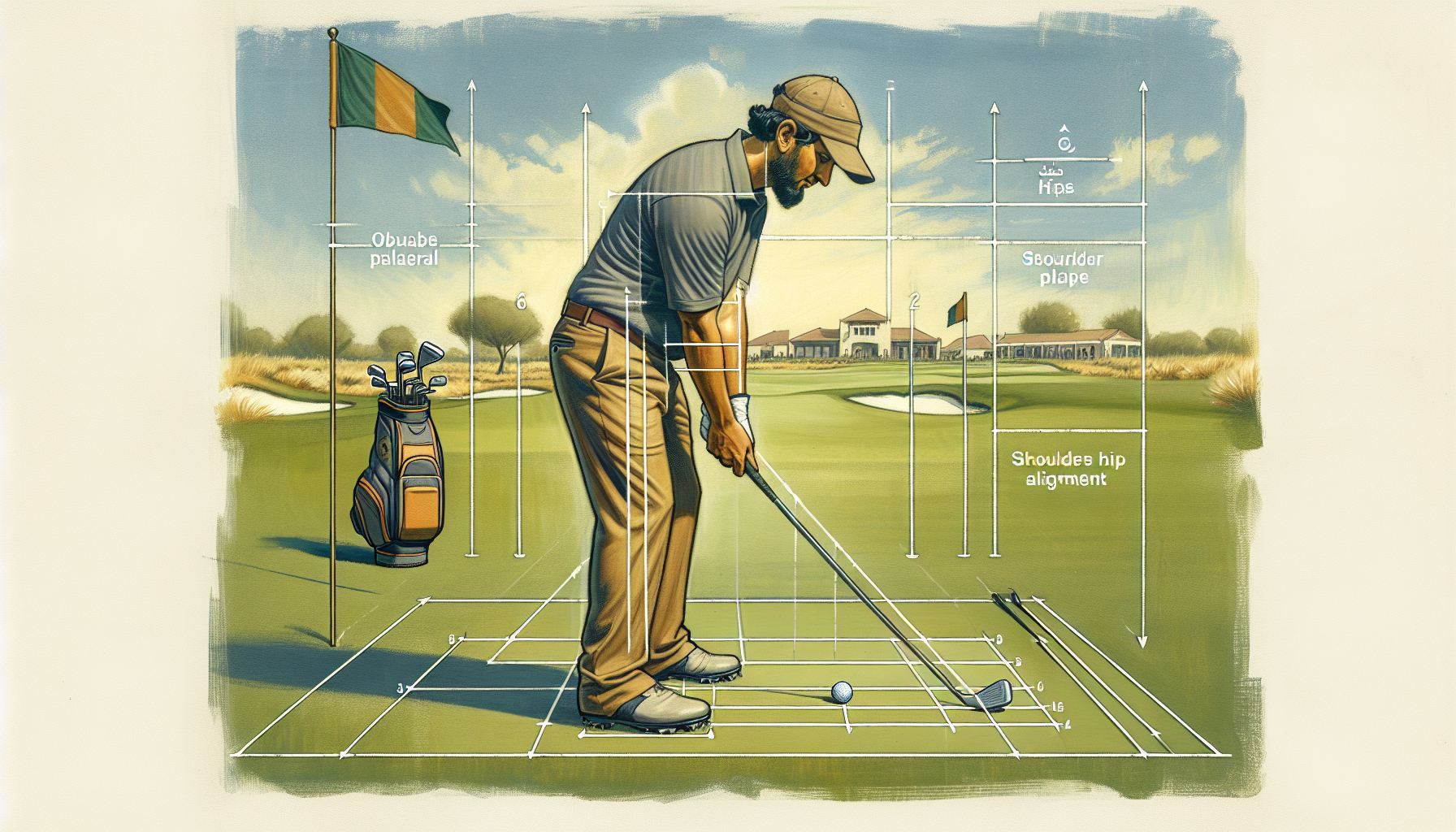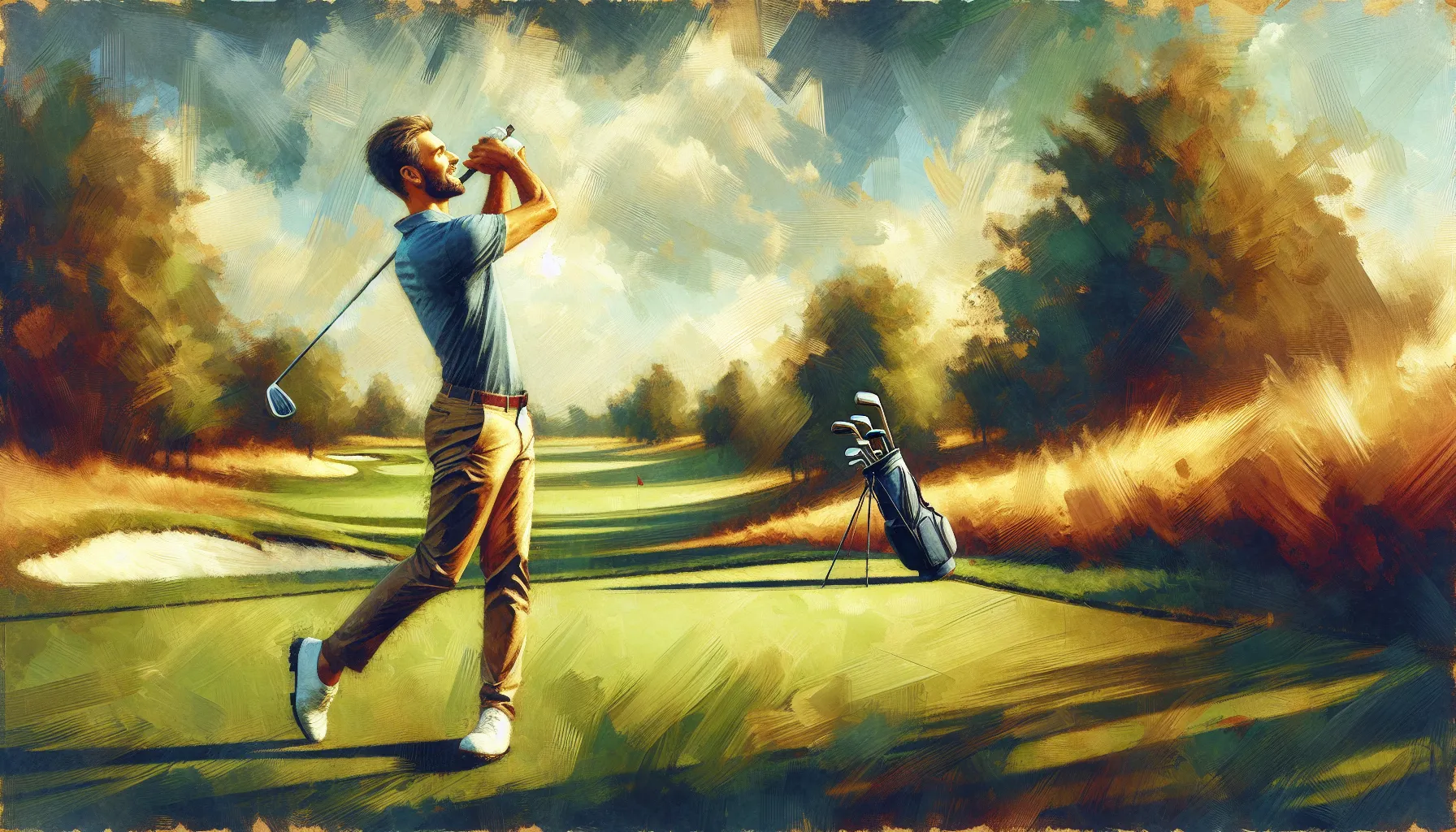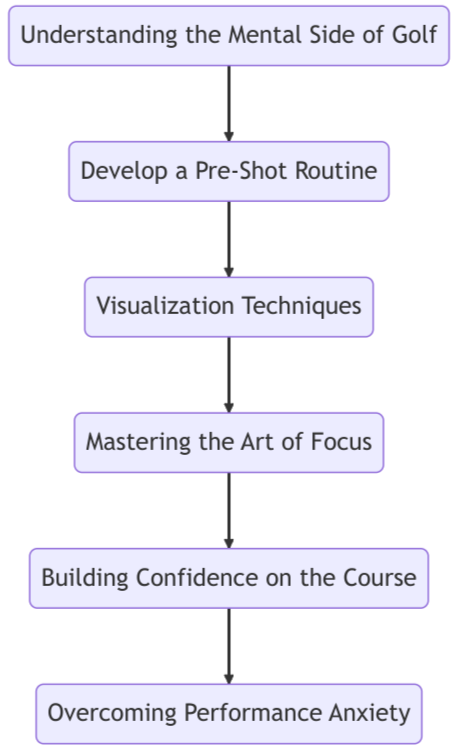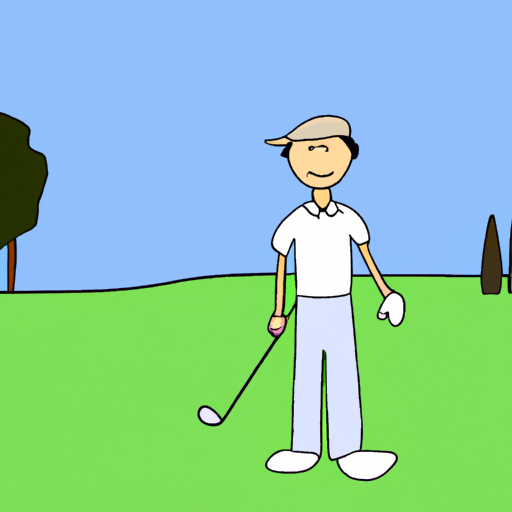Finally Swing Great in Cold: 5 Secrets Weekend Golfers Use
Last winter, standing on the 10th tee at my home course with the temperature barely hitting 35 degrees, I watched my usual smooth swing turn into an awkward, restricted mess. My buddies were having the same problem – what should have been easy 7-irons were coming up 20 yards short, and our timing felt completely off.
That's when I realized cold weather doesn't just make golf uncomfortable – it fundamentally changes how our bodies move and how equipment performs. After 25 years of weekend golf, I've discovered that the golfers who thrive in cold conditions aren't necessarily more talented. They just understand how to adapt their swing to work with winter conditions instead of fighting against them.
How Does Cold Weather Affect Your Golf Swing?
Cold weather affects your golf swing in three critical ways that most weekend golfers don't fully understand. According to Bradley Turner, Keiser University College of Golf Director of Online Golf Instruction (MBA, PGA), "In cold weather, the muscles in your body tend to contract and tighten in an attempt to keep you warmer. This will result in less flexibility and can significantly affect your range of motion, thus influencing the golf swing."
The physical impact is more severe than most golfers realize. Cold weather can reduce a golfer's club head speed by as much as five miles per hour, resulting in a 10-13-yard loss of carry distance with a driver. This isn't just about the ball – it's about how your body functions when it's trying to stay warm.
Your joints are particularly affected. Cold weather can lead to a reduction in joint lubrication, affecting the mobility of crucial joints in the wrists, elbows, and shoulders. This can hinder the golfer's ability to maintain the rhythm and tempo of the golf swing, key factors in consistent ball striking.
After experiencing this firsthand during a particularly brutal February round, I learned that accepting these limitations isn't giving up – it's the first step toward playing better cold weather golf.
🥶 Cold Weather Swing Reality Check
- ⭐ Muscle tightness reduces swing speed by 5+ mph
- 📉 Distance loss: 10-13 yards with driver, 5-8 with irons
- 🦴 Joint mobility decreases affecting rhythm and tempo
- 🤲 Grip control compromised by vasoconstriction
Why Do Golf Balls Go Shorter in Cold Weather?
The science behind cold weather distance loss involves both the ball and the air around it. According to research by Andrew Rice (GOLF Top 100 Teacher), golfers who hit drives about 250 yards will lose about two yards on their drives for every 10 degree drop in temperature.
Here's what's happening: The golf ball becomes denser in cold weather, and the air density increases. This results in less compression at impact and shorter flight through the dense air.
According to the United States Golf Association (USGA), distance decreases by two yards for every 10-degree drop in the temperature. Simply put, cold air is denser and creates more drag.
During my weekly foursome's winter rounds, we started tracking our distances and discovered the difference was even more dramatic than expected. What used to be a comfortable 7-iron to a back pin became an easy 6-iron, sometimes even a 5-iron on the coldest days.
But there's more to it than just air density. A recent study by MyGolfSpy revealed that extremely cold temperatures (22-32 degrees) create lower ball speed, spin rates, launch angle, apex and carry. Collectively, this leads to a loss of 21 yards of carry distance versus golf balls stored in warm temperatures (70-90 degrees).
📊 Distance Loss Formula
- 🌡️ Every 10°F drop = 2 yards less distance
- ❄️ Extreme cold (22-32°F) = 21 yards total loss
- 💨 Dense air creates additional drag on ball flight
- ⚾ Ball compression decreases affecting spring effect
What Temperature Is Too Cold for Golf?
As someone who's played in everything from crisp 45-degree mornings to brutal 25-degree days, I've learned there's a practical limit where enjoyment becomes endurance. According to Dr. John Castellani, a physiologist at the United States Army Research Institute of Environmental Medicine, "When the temperature dips below 59 degrees Fahrenheit, that's when things become more difficult. At this temperature, you start to lose tactile sensation and dexterity in the hands."
Most weekend golfers find their comfort zone around 40 degrees Fahrenheit, especially with proper layering. But what really matters isn't just the temperature – it's the wind chill factor.
I remember one December round where the thermometer read 42 degrees, but a 15-mph wind made it feel like the mid-20s. My playing partner called it quits after nine holes, and honestly, I should have too. The lesson? Factor in wind chill, not just air temperature.
Many golfers find that right around 40 degrees Fahrenheit is their limit. If it gets colder than this, and then you factor in a little wind, the course conditions are tough.
Here's what I've learned about temperature thresholds:
- 50-59°F: Noticeable but manageable with proper clothing
- 40-49°F: Significant swing changes needed, focus on course management
- 30-39°F: Only for die-hard golfers, expect major performance impacts
- Below 30°F: Honestly, time to hit the simulator or practice short game indoors
The real danger isn't just poor scores – it's potential injury from tight muscles trying to make full swings in restrictive conditions.
How to Adjust Your Golf Swing for Cold Weather
The biggest mistake weekend golfers make in cold weather is trying to swing exactly like they do in summer. After working through this problem with my regular foursome, we discovered five key adjustments that actually improved our winter scores.
Shorten Your Backswing
Cold weather and heavier clothing can restrict movement, meaning your usual swing might not be as effective. Shortening your backswing can help maintain control and ensure cleaner contact with the ball.
During a particularly cold March round, I noticed my buddy Mike consistently outplaying the rest of us despite being the shortest hitter in our group. His secret? He'd shortened his backswing to about three-quarters and focused on solid contact rather than distance.
The technical reason this works: reduced range of motion from cold muscles makes a full backswing awkward and off-balance. By consciously shortening your swing, you maintain better control and timing.
Swing Easier, Not Harder
As Dave Linhart, a golf instructor known for his winter golf workshops, recommends: "During winter rounds, practice with a more compact swing to reduce the risk of slicing or hooking under pressure."
Luke Kerr-Dineen (2.5 handicap, Game Improvement Editor at GOLF Magazine) explains: "When it's cold, you won't be able to turn as far, or swing as hard, which means your swing speed will drop and you'll hit the ball shorter accordingly. Accept it. Understand that you won't have your usual speed, so focus on hitting the ball on the sweet spot rather than risking injury forcing speed you don't have."
I used to try compensating for cold weather by swinging harder. Big mistake. Now I focus on smooth tempo and solid contact, accepting that I'll need one or two more clubs than usual.
Focus on Tempo and Balance
Justin Thomas emphasizes the importance of transition rhythm: "Making sure the transition is in rhythm is really important for me in particular. It kind of doesn't matter what I'm working on in my swing. I just need to make sure it's in rhythm."
Cold muscles don't respond as quickly as warm ones, so maintaining smooth tempo becomes even more critical. I've found that humming a simple tune during my swing helps maintain consistent rhythm when the cold tries to rush my tempo.
Adjust Your Setup Position
Bulky clothing affects your setup position. I've learned to:
- Stand slightly more upright to accommodate layers
- Grip down on the club about an inch for better control
- Widen my stance slightly for better balance
- Check that my arms can swing freely without catching on clothing
Use More Club, Trust Less
This was the hardest adjustment for my ego, but the most important for my scores. Where I'd normally hit a 7-iron, I now grab a 6-iron or even a 5-iron in truly cold conditions.
As Bradley Turner notes: "Instead of using a 7-iron, pull out a 5-iron, and you will mentally sense the strength in the club to get the ball to the flagstick. Taking two or three more clubs is a powerful ally in combating cold weather conditions."
🎯 Cold Weather Swing Adjustments
- ✂️ Shorten backswing to 3/4 for better control
- 🎵 Focus on smooth tempo over power
- 📏 Take 1-2 more clubs than normal distance
- ⚖️ Adjust setup for bulky clothing restrictions
What Equipment Changes Help in Cold Weather?
Equipment adjustments can make a significant difference in cold weather performance. Based on my experience and testing with different setups, here are the changes that actually matter.
Golf Ball Selection
The takeaway: no matter which balls you play this winter, make sure to store them in a warm place to ensure they perform closer to their usual specifications.
I switched to lower compression balls for winter golf after noticing my regular ball felt like hitting a rock in cold conditions. Using a ball with a lower compression rating can help in cold weather. A softer, low-compression ball will compress more easily, even in lower temperatures, allowing for better distance.
My current winter setup uses a 2-piece ball with compression around 60-70, compared to the 90+ compression ball I play in warmer weather. The difference in feel and distance is noticeable.
Club Storage and Care
Keep your clubs stored inside the house all winter long. Do not keep them in the garage or, worse yet, the trunk of your car. If you have any distance to drive to play golf on a cold day, keep your golf clubs inside the warmth of the car.
This seems obvious, but I learned it the hard way. Cold clubs feel harsh and unresponsive. Now I bring my clubs inside the night before any winter round.
Grip Considerations
The grips can become slick or even hard in the cold, making it more challenging to maintain a solid hold. Keeping hands and grips dry is essential.
I invested in winter golf gloves that I wear on both hands – something I never considered in warmer weather. The improved grip confidence alone was worth the adjustment period.
Clothing That Doesn't Restrict Your Swing
The biggest revelation for my game was understanding that staying warm matters more than looking like a tour pro. For colder rounds, upgrade to a long sleeve or turtleneck performance shirt. You'll also want to wear a pullover that minimizes airflow, i.e., not cotton.
My winter golf outfit now includes:
- Moisture-wicking base layer
- Thin insulating layer
- Wind-resistant outer layer that I can remove if I get too warm
- Winter golf gloves for both hands
- Beanie instead of a regular golf cap
🛠️ Cold Weather Equipment Setup
- 🏌️ Low-compression golf balls (60-70 rating)
- 🏠 Store clubs inside house, not garage
- 🧤 Winter gloves on both hands for better grip
- 👕 Layered clothing that allows full swing motion
Mental Game Adjustments for Cold Weather Golf
The mental side of cold weather golf is where most weekend golfers struggle. After years of winter rounds, I've learned that mindset adjustments are just as important as physical ones.
Lower Your Expectations
A cold-weather mindset is one that readily accepts the challenges of the day. Instead of fighting the conditions, an experienced winter golfer will lower performance expectations.
This doesn't mean playing worse – it means playing smarter. I used to get frustrated when my usual game plan didn't work in cold conditions. Now I set realistic goals: focus on solid contact, avoid big numbers, and enjoy being outside when others are stuck indoors.
Embrace Conservative Course Management
Cold weather golf rewards smart decision-making over hero shots. Cold-weather golf is all about scoring — if that means taking two extra clubs and keeping your swing simple and elemental, that's just fine.
During one memorable January round, I played the most conservative golf of my life and shot one of my best winter scores. No risky carries over water, no attempts to squeeze drives through tight gaps – just smart, percentage golf.
Focus on the Process, Not Results
When the golf ball does not travel as far as in normal weather conditions, it can undermine a golfer's confidence to hit good golf shots. Frustration and impatience can lead to a loss of composure and poor decision-making.
I've learned to celebrate good swings regardless of the result. A well-struck 7-iron that flies 15 yards shorter than usual is still a good shot – the cold weather is the variable, not my swing quality.
Stay Present and Patient
Cold weather tests patience like nothing else. Rounds take longer, shots don't behave as expected, and equipment feels different. The golfers in my group who enjoy winter golf most are those who slow down and appreciate the unique challenge rather than fighting it.
Pre-Round Preparation for Cold Weather
Proper preparation makes the difference between a miserable slog and an enjoyable round. Through trial and error, I've developed a routine that helps me play my best when the mercury drops.
Extended Warm-Up
Warming up in the cold takes a lot longer. Similar to your car, it's important to give your body a little extra time to warm up on those cold days on the driving range.
My cold weather warm-up now takes twice as long as my summer routine:
- 10 minutes of dynamic stretching before leaving the car
- Start with easy half-swings and gradually work up to full swings
- Hit at least 20 balls before heading to the first tee
- Focus on tempo and contact, not distance
Gear Checklist
From bitter experience, I've learned to pack extra equipment for cold weather rounds:
- Hand warmers (keep spares in multiple pockets)
- Extra towel for grips and ball cleaning
- Backup gloves in case the first pair gets wet
- Hot drinks in a thermos
- Extra layer in case weather changes
Course Strategy Planning
Before stepping onto the first tee, I remind myself of cold weather realities:
- Add 1-2 clubs to every approach shot
- Avoid risky shots over water or hazards
- Plan for longer rounds due to slower play
- Identify bailout areas on each hole
⏰ Cold Weather Prep Checklist
- 🔥 Extended warm-up: 2x normal time
- 🎒 Pack hand warmers, extra towels, backup gloves
- 🗺️ Plan conservative course strategy
- 🎯 Set realistic scoring expectations
Key Takeaways for Cold Weather Golf Success
After years of winter golf experimentation and countless conversations with fellow weekend warriors, here's what really works for maintaining your game when temperatures drop:
Physical Adjustments Are Non-Negotiable: Accept that your body won't move the same way in cold weather. Shorten your backswing, focus on tempo, and prioritize solid contact over distance. Cold weather can reduce clubhead speed by up to 5 mph, costing you 10-13 yards with a driver – fighting this reality only leads to poor swings and frustration.
Equipment Matters More Than You Think: Store clubs inside, switch to lower-compression balls, and invest in proper winter gear. The small details like winter gloves on both hands and keeping hand warmers in your pocket can dramatically improve your round quality.
Mental Game Is Everything: A cold-weather mindset readily accepts the challenges of the day rather than fighting the conditions. Plan for longer rounds, lower scores, and different ball flights. The golfers who enjoy winter golf most are those who embrace it as a different game rather than a compromised version of summer golf.
Course Management Becomes Critical: Take extra clubs on every approach, avoid risky shots, and focus on keeping the ball in play. Cold weather rewards smart, conservative play over aggressive shot-making.
Most importantly, remember why you're out there. Very few people are willing to play golf in challenging conditions – embrace that as part of what makes you a dedicated weekend golfer.
How Much Distance Do You Lose with Irons in Cold Weather?
Iron distance loss follows a predictable pattern in cold conditions. According to Andrew Rice's TrackMan research, the distance decrease will be less with shorter clubs. For a pitching wedge, you'll only gain or lose about 1.3 yards per 10 degrees.
Here's what I've observed through my own distance tracking and discussions with my regular foursome:
Long Irons (4-6): Lose 6-8 yards per 10-degree temperature drop
Mid Irons (7-8): Lose 4-6 yards per 10-degree temperature drop
Short Irons (9-PW): Lose 2-4 yards per 10-degree temperature drop
The reason for the graduated effect relates to swing speed and ball compression. Longer irons rely more on clubhead speed and ball compression for distance, both of which are significantly affected by cold weather.
During a particularly cold round last December, I tracked every iron shot and found that my usual 7-iron distance of 150 yards dropped to 140 yards in 35-degree weather – almost exactly matching the research predictions.
What Should You Wear Golfing in Cold Weather?
The layering system I've developed through years of winter golf focuses on warmth without restricting swing motion. Layering is key to staying comfortable throughout your round. Most pros at the PGA Championship are wearing short-sleeve polos as a base layer, which is a good move on milder days.
Base Layer: Moisture-wicking material that fits snugly against your skin. I prefer merino wool or synthetic materials that pull sweat away from your body.
Insulating Layer: A thin fleece or lightweight down vest that provides warmth without bulk. This layer should be easy to remove if you warm up during the round.
Outer Layer: Having a moisture-wicking jacket or vest is always a good idea, especially on windy days. Look for golf-specific outerwear that's designed to allow full range of motion.
Lower Body: A classic go-to is wearing rain pants over your regular golf pants. They'll keep the wind from cutting, and when you get too hot, they're easy to remove.
Extremities: If it's really cold, trade your regular baseball-style hat for a beanie. You lose most of your heat through your head!
The key is avoiding cotton at all costs – it retains moisture and loses insulating properties when wet. Every piece of my cold weather golf outfit is either wool or synthetic.
Frequently Asked Questions About Cold Weather Golf
Does cold weather affect golf ball compression?
Yes, significantly. In extremely cold temperatures (22-32 degrees), golf balls experience lower ball speed, spin rates, launch angle, apex and carry, leading to a collective loss of 21 yards of carry distance versus balls stored in warm temperatures. The rubber core becomes less responsive, reducing the spring effect that creates distance.
Should I use different golf clubs in winter?
While you don't need different clubs, you should adjust your club selection. Golfers need to make course management adjustments, including hitting more clubs than a normal summer day on the links. I typically use 1-2 clubs more than my normal distances, and I've had success switching to a slightly softer shaft during winter months.
How do I keep my hands warm while golfing?
Josh Sens (2.5 handicap) recommends: "For me, it's keeping my hands warm. When you have a swing with as many moving parts as mine, you need to keep those small-twitch muscles firing." Use winter golf gloves on both hands, keep hand warmers in your pockets, and consider mittens between shots.
Is it safe to play golf in freezing temperatures?
While possible, it requires extra precautions. When the temperature dips below 59 degrees Fahrenheit, you start to lose tactile sensation and dexterity in the hands. Below 32°F, consider the risks of slipping on ice, reduced reaction times, and potential cold-related injuries.
Do golf courses close for cold weather?
Most courses stay open as long as there's no frost or snow on the ground. However, some implement winter rules like preferred lies or cart path restrictions. Always call ahead to check conditions and any special rules in effect.
Can cold weather permanently damage golf equipment?
The cold can impact the materials used in golf clubs. Graphite and steel shafts can become stiffer with cold temperatures, altering the flex and performance of the club. While temporary, repeated exposure to extreme cold can affect shaft performance over time. Store equipment indoors when possible.








